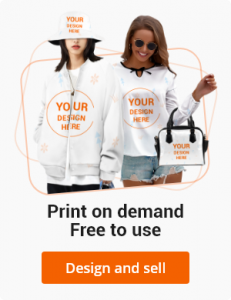Critical steps for clothing suppliers to secure a profitable dropshipping brand. What are the key supplier strategies to achieve long-term dropshipping success?
If you’re serious about creating a successful dropshipping fashion brand, you can’t treat suppliers as just order fillers. They’re vital business partners. A solid supplier strategy keeps your orders accurate, your customers satisfied, and your brand growing sustainably. The following strategies will assist you in selecting the appropriate partners, minimizing risks, and differentiating in a competitive marketplace.

Page overview:
How to Identify the Right Dropshipping Clothing Suppliers?
What Supplier Characteristics Define A Successful Dropshipping Partnership?
How Do You Screen Apparel Suppliers Prior To Collaborating?
Why Do We Need Branding in Dropshipping Clothing?
How to Handle Inventory Risks in Clothing Dropshipping?
What Are Smart Communication Practices With Dropshipping Suppliers?
How Can You Scale Your Clothing Dropshipping Brand With Supplier Support?
Supplier Strategy is The Backbone of Dropshipping Success
FAQ: Frequently Asked Questions About Clothing Suppliers In Dropshipping
How to Identify the Right Dropshipping Clothing Suppliers?
Niche Alignment And Product Fit
Your supplier’s catalog needs to match your brand’s niche. If you are doing streetwear or sustainable clothing, your supplier needs to have products that would fall under that niche—not plain blanks—selling clothing that is not in your niche waters down your branding and leads to a greater return rate.
Location And Fulfillment Speed
Shipping duration can make or break a customer’s experience. Vendors with warehouses close to your buyer base (such as U.S. or EU warehouses) are perfect. Even if the item costs a bit more, quicker delivery minimizes arguments, builds trust, and boosts repeat orders.
Supplier Reviews
Do your due diligence prior to making a commitment. Look beyond the supplier’s website — check Reddit, eCommerce forums, and Trustpilot. Consistent complaints about product inconsistency or poor support are red flags. If possible, ask other store owners with direct experience.
Sticking to fashion rules
Apparel comes with sizing, labeling, and textile compliance standard — particularly if you’re retailing in the U.S. or the EU. Ensure your vendor is compliant with fundamental standards such as CPSIA for kids’apparel or REACH for the EU. You are held accountable for what your shop retails.
EPROLO assists major clothing suppliers with complimentary product sourcing, automated fulfillment, and a personalized branding tool, everything you require to create a successful dropshipping brand.
What Supplier Characteristics Define A Successful Dropshipping Partnership?
Low MOQ And Transparent Pricing
Good suppliers are upfront about pricing, like the base cost, shipping cost, and any extra fees. For new brands, having a low or no minimum order is super important to try out styles without any risk.
High-Quality Photos and Descriptions
You should not need to take new photos for every listing. Good sellers provide well-lit, clear photos from different angles, including model shots. Brownie points if descriptions specify fabric content, measurements, and care instructions.
Responsive Communication And English Proficiency
Fast, comprehensible answers save time and aggravation. You want suppliers that respond within 24 hours and get your requirements right the first time. If you’re growing quickly, you will want someone who can keep up and resolve issues without back-and-forth delays.
Returns & Warranty
Your refund policy is influenced by your supplier’s return policy. If they do not take returns, you will need to absorb the cost. Select vendors that have resonable return window, defect guarantees, and the ability to process exchanges.
How Do You Screen Apparel Suppliers Prior To Collaborating?
Sample Orders And Quality Inspection
Don’t judge a product from its photo. Order various sizes and check the stitching, material, fit, and finish. Wash test some of the products. This is your brand’s reputation —YOU have to know what the customer gets.
Reviewing shipping times and tracking reliability
Send items to various addresses and monitor timeframes. Check if tracking numbers work correctly and shipments arrive intact. If delivery is consistently late, that’s a deal-breaker.
Evaluating Packaging and Branding Decisions
Presentation is everything when it comes to dropshipping. Inquire about branded hangtags, logo polybags, or custom inserts. These details provide your brand with a high-end feel, even if you aren’t doing fulfillment.
Assessing Inventory Accuracy
You don’t want to feature products that are unexpectedly out of stock. Do they have real-time inventory sync, and how frequently does stock update? Suppliers that can’t maintain accurate inventory cause unnecessary customer service issues.
Why Do We Need Branding in Dropshipping Clothing?
White Label vs. Private Label
White label lets you add your logo to ready-made products. Private label provides more in-depth customization, such as selecting fabric or cuts. Both are handy depending on what stage of growth you’re at —just ensure that your supplier provides at least one of them.
Custom Packaging & Inserts
Branding is not just logos. It is about the entire unboxing experience. Inserts, care cards, and branded packaging add perceived value and make your brand more memorable. A lot of customers evaluate your business on packaging alone.
Building Long-Term Customer Trust
Consistent design and labeling signal quality to buyers, while unbranded items appear generic. For retention over transactions, branding is essential.
Influencer Collaboration Potential
Influencers want professional products. Poor packaging or unexciting products can lead to rejected collaborations. Suppliers that offer branded products give you negotiating power for features.
How to Handle Inventory Risks in Clothing Dropshipping?
Live Sync With Supplier Inventory
Your store must reflect live inventory. Selling out-of-stock items leads to refunds, bad reviews, and broken trust. Integrate with platforms that support automatic inventory updates, like EPROLO or DSers.
Seasonal Trend Forecasting
Fashion is trend-driven. Deal with suppliers who monitor changes and suggest trending products ahead of time. It keeps you in the lead and ensures that you are not stuck with products that are already past their peak.
Backup Suppliers And Multi-Warehouse Strategy
One supplier isn’t enough. What if they raise prices or run out? Maintain a small list of alternate vendors with similar products so you’re not stuck when things go wrong. And if possible, prioritize those with multiple fulfillment centers.
Stock Alert Automation Tools
Use automation to track low-stock items, price reductions, or delayed shipping. Good supplier platforms natively offer these tools. They’ll notify you in time to delist or move to alternates before it impacts your orders.

What Are Smart Communication Practices With Dropshipping Suppliers?
Establishing SLA Expectations Early
An SLA means service-level agreement, which is your mutual agreement regarding processing time, communication, and quality. Be sure to define it clearly beforehand to ensure there are no misunderstandings later on.
Joint Dashboards And Weekly Check-Ins
Particularly if you’re doing high volume, remain in the loop. Weekly calls or shared spreadsheets can assist you in aligning on product modifications, bestsellers, or potential delays. Treat it like handling a remote team, not a faceless service.
Successfully Handling Disputes and Returns
Disagreements will occur, be it a defective product or an error in print. What is important is the way your supplier resolves it. A reliable partner will look into it promptly and provide resolutions such as replacements or refunds without extensive negotiations. EPROLO offers 7-day no-questions-asked returns for clothing, so you do not need to worry about the returns.
Language And Cultural Sensitivity
Working across time zones and languages?
Be clear, patient, and precise. Keep communication written when possible, avoid slang, and remember that a respectful tone builds long-term goodwill.
How Can You Scale Your Clothing Dropshipping Brand With Supplier Support?
Negotiating More Favorable Terms With Expansion
If you are a repeat client, request advantages like discounts, precedence services, or free storage. Smart suppliers understand that your success benefits them too.
Early access or special offers
Try to connect with them and see if you can score early access to their new designs or collections. Some suppliers even let you book stock ahead of time for promos or product launches.
Co-Marketing Opportunities
Larger suppliers may provide co-branded material, packaging agreements, or even affiliate commissions. It does not cost anything to ask. When you have a solid niche, they may be willing to feature your store as well.
Supplier Feedback on Product Trends
Don’t overlook your supplier’s intelligence. They know what moves across dozens of shops you ‘re not monitoring.
Supplier Strategy is The Backbone of Dropshipping Success
Dropshipping apparel is more than listings and ads; it’s trust, timing, and creating long-term relationships. A good supplier strategy turns one-time sales into a memorable brand. Start with the right partner. Test, iterate, and build systems that scale. Ready to build? Invest in your supply chain today.
FAQ: Frequently Asked Questions About Clothing Suppliers In Dropshipping
Q1: Can I Switch Suppliers After I Launch My Store?
Yes, but carefully. Ensure your new supplier offers the same products and SKUs so that you don’t have listing issues. Notify your customers of shipping changes. Make the transition gradually and test the new supplier before committing fully.
Q2: Do Clothing Suppliers Allow Customization for Small Brands?
Most do, but to varying degrees. Some offer logo-only options, but others offer color or material alteration. Look for suppliers with low MOQs and accommodating branding. EPROLO does custom inserts, labels, and packaging without requiring high volumes.
Q3: How Do I Guarantee Supplier Performance During Peak Seasons?
Peak seasons (like Q4 or back-to-school) can overwhelm even excellent suppliers. Get ahead by estimating demand early and locking in inventory. Communicate each week, confirm processing timeframes, and understand return policies before scaling marketing. A second supplier or fulfillment partner is also a backstop if your main one gets inundated.







